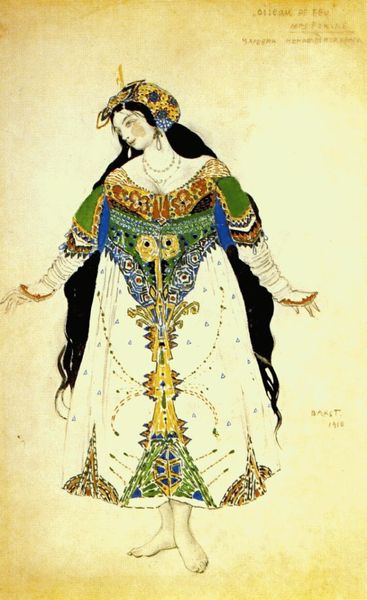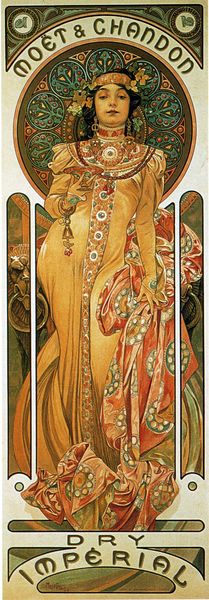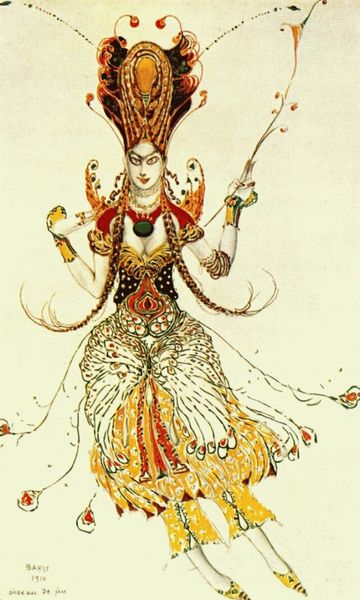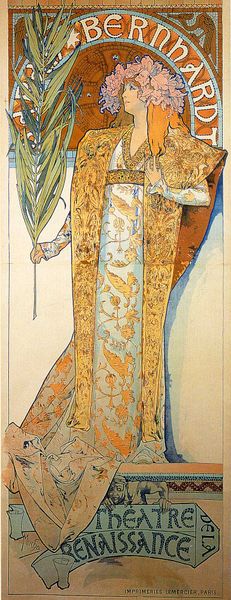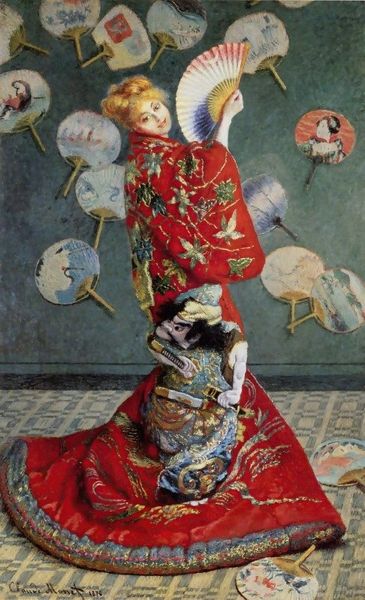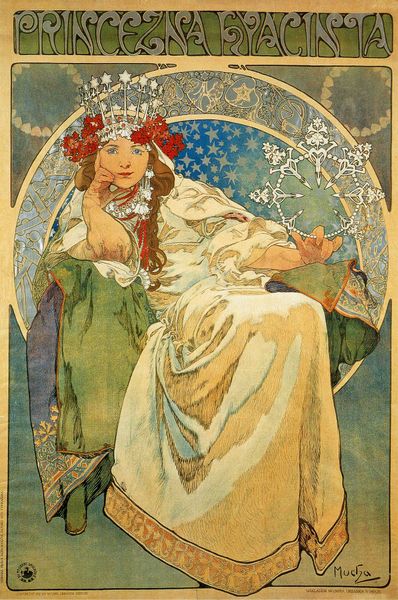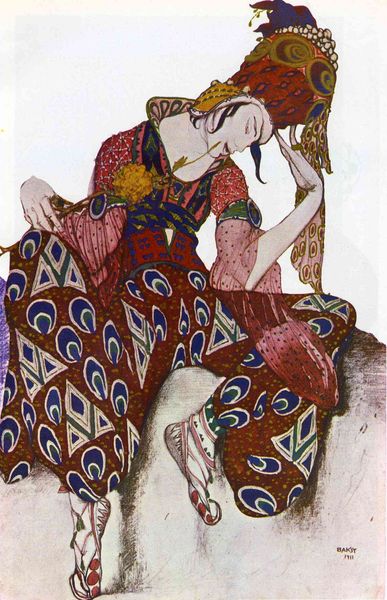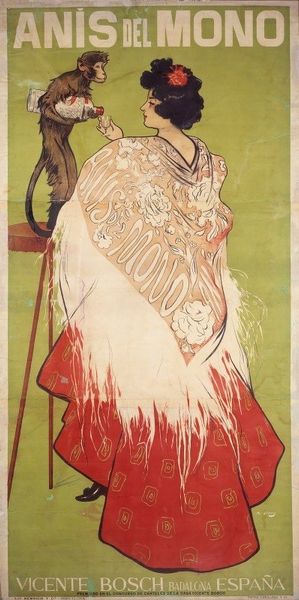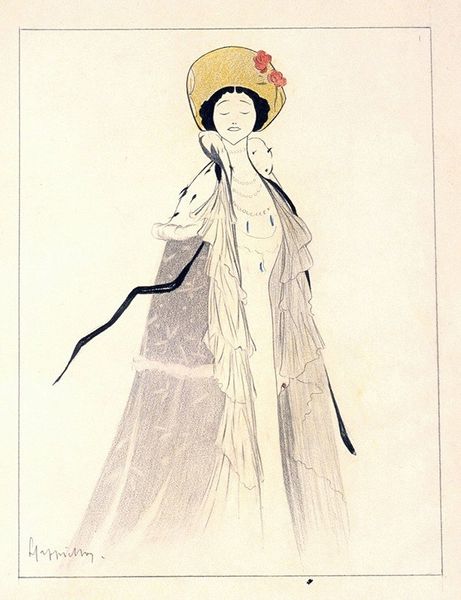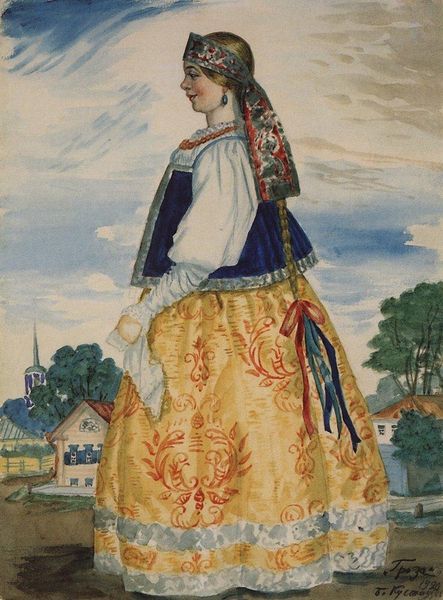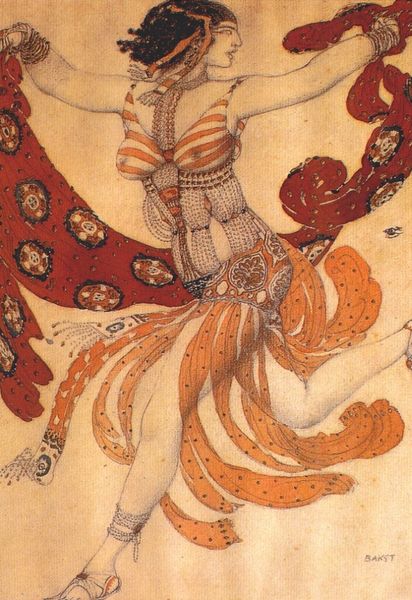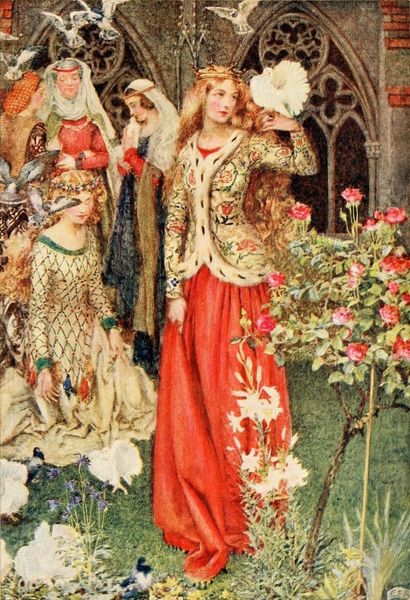
performance, watercolor
#
performance
#
watercolor
#
costume
#
symbolism
#
watercolour illustration
#
watercolor
Copyright: Public domain
Curator: Welcome. Today, we'll be discussing Léon Bakst's "La légende de Joseph. Potiphar's Wife" from 1914, a watercolor. Editor: My first thought is "opulence." Look at the scale of the gown; its intense redness paired with a certain fragility afforded by the medium of watercolor create an intriguing tension. Curator: Precisely. Bakst's control of the medium allows him to suggest textures—the sumptuousness of the gown, the pearl jewelry, and the starkness of skin—creating a deliberate hierarchy within the image's semiotic system. Note also the symbolism—a clear erotic tension is present here. Editor: It's impossible to ignore the materials listed together here in this piece: watercolors evoke immediacy, of course, but within a staged presentation, such as a performance, materiality becomes so crucial to examine—as something of the stagecraft in concert with the actual art being enacted in the performance, the stage costumes must be made. One wonders what textiles and forms would be sourced? Curator: Quite so. And notice the costume design transcends mere illustration. Bakst, who embraced symbolism, offers us a layered narrative through the careful deployment of visual elements: shape and color and form working together. It’s all interwoven to reflect her interiority, creating what you termed so acutely: a controlled spectacle. Editor: That tension interests me here too: something mass produced versus singular—especially when talking of the history of costume, of how material could evoke gender, place, and profession with particular effect at the time this watercolour was created, yet still must be replicated numerous times. How can its creation ever be called singular when its materials and form would be used repeatedly, for its ultimate purpose in an unceasingly continuous action? Curator: Bakst presents not simply Potiphar's wife, but an interpretation, a condensation of character and symbolic meaning which demands to be decoded, which ultimately has more meaning for our contemporary readings of its creation as costume and image. The painting performs something between mass consumption of symbolism, mass appeal for the design itself, yet one designed from singular origins: so it's origin itself and its production that makes this water-colour design stand out even further. Editor: It offers a different perspective now knowing how material makes the design possible: labor of its time, class differences in access of materials, and the possibility of an actual physical presence makes such an impact on the staging that its lasting symbolism on paper still makes itself known. Curator: A layered reading, indeed. Thank you.
Comments
No comments
Be the first to comment and join the conversation on the ultimate creative platform.
